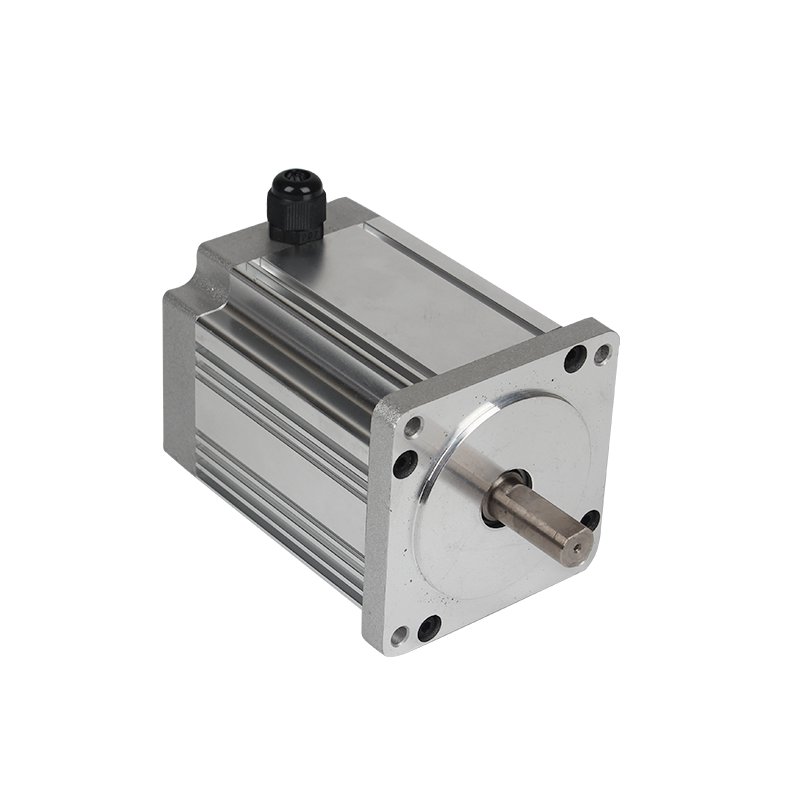Selecting the perfect axial fan blade is crucial for achieving optimal performance and efficiency. Whether you’re managing a large industrial facility or simply looking to upgrade your home cooling system, the right blade can make all the difference. Improved airflow, reduced energy consumption, and quieter operation are just a few of the benefits you can enjoy with the ideal fan blade.
In this comprehensive guide, we’ll dive deep into the world of axial fan blades, exploring everything from basic principles to advanced customization options. We’ll walk you through assessing your airflow requirements, selecting the best materials, optimizing blade shape and size, and much more. By the end of this post, you’ll be equipped with the knowledge to choose a fan blade that not only meets your specific needs but also maximizes efficiency and performance. Let’s get started on your journey to fan blade mastery! 💨🔧
Understanding Axial Fan Blade Basics
Key components of axial fan blades
Axial fan blades consist of several crucial components that work together to generate airflow efficiently:
-
Hub: The central part that connects the blades to the motor shaft
-
Blades: The primary airfoil-shaped surfaces that move air
-
Root: The base of the blade where it attaches to the hub
-
Tip: The outermost part of the blade
-
Leading edge: The front edge of the blade that first contacts the air
-
Trailing edge: The rear edge of the blade where air exits
| Component | Function |
|---|---|
| Hub | Connects blades to motor |
| Blades | Generate airflow |
| Root | Provides structural support |
| Tip | Determines effective diameter |
| Leading edge | Initiates air contact |
| Trailing edge | Directs air exit |
How blade design affects airflow
The design of axial fan blades significantly impacts airflow performance:
-
Blade angle: Determines the volume of air moved and pressure generated
-
Blade count: Influences air volume and noise levels
-
Blade profile: Affects efficiency and noise generation
-
Blade material: Impacts weight, durability, and performance
Impact of blade choice on energy efficiency
Selecting the right axial fan blade is crucial for optimizing energy efficiency:
-
Lightweight materials reduce motor load
-
Aerodynamic profiles minimize air resistance
-
Optimized blade angles increase air movement per rotation
-
Proper blade count balances airflow and energy consumption
By carefully considering these factors, you can choose an axial fan blade that maximizes airflow while minimizing energy consumption. Next, we’ll explore how to assess your specific airflow requirements to further refine your blade selection.
Assessing Your Airflow Requirements
Calculating necessary air volume
To choose the right axial fan blade, you must first determine the required air volume for your application. This is typically measured in cubic feet per minute (CFM) or cubic meters per hour (m³/h). Use the following formula to calculate the necessary air volume:
Air Volume = Room Volume × Air Changes per Hour
| Room Type | Recommended Air Changes per Hour |
|---|---|
| Office | 6-8 |
| Workshop | 8-12 |
| Kitchen | 15-20 |
| Laboratory | 6-12 |
Determining static pressure needs
Static pressure is the resistance to airflow within a system. Higher static pressure requires more powerful fan blades. Factors affecting static pressure include:
-
Ductwork length and bends
-
Filters and obstacles
-
Air density and temperature
Calculate the total static pressure by summing up all resistances in your system.
Considering environmental factors
Environmental conditions significantly impact axial fan blade performance:
-
Temperature: Affects air density and motor efficiency
-
Humidity: Influences air properties and potential condensation
-
Altitude: Changes air density, affecting blade performance
-
Contaminants: May require specialized blade materials or coatings
Matching blade performance to application
Select an axial fan blade that meets your specific requirements:
-
Airflow capacity (CFM or m³/h)
-
Static pressure handling
-
Energy efficiency rating
-
Noise level limitations
-
Durability in the operating environment
By carefully assessing these factors, you can choose an axial fan blade that maximizes airflow while optimizing energy consumption. This tailored approach ensures optimal performance for your specific application, whether it’s ventilation, cooling, or industrial processes.
Blade Material Selection for Optimal Performance
A. Plastic vs. metal blades
When selecting axial fan blades, the choice between plastic and metal materials is crucial. Each option has its advantages and drawbacks:
| Feature | Plastic Blades | Metal Blades |
|---|---|---|
| Weight | Lighter | Heavier |
| Cost | Generally cheaper | More expensive |
| Durability | Less durable | More durable |
| Efficiency | Can be less efficient | Generally more efficient |
| Customization | Easier to mold | More difficult to customize |
Plastic blades are ideal for applications requiring lightweight, cost-effective solutions. They’re easier to manufacture and can be molded into complex shapes. However, metal blades offer superior durability and efficiency, making them suitable for heavy-duty industrial applications.
B. Corrosion-resistant options
For environments with corrosive elements, choosing the right material is essential:
-
Stainless steel: Excellent corrosion resistance
-
Aluminum: Good corrosion resistance and lightweight
-
Fiberglass-reinforced plastic: Combines corrosion resistance with lightweight properties
C. Temperature considerations
The operating temperature range greatly influences blade material selection:
-
High-temperature environments: Metal blades (e.g., stainless steel, aluminum)
-
Moderate temperatures: Both plastic and metal options
-
Low-temperature settings: Specialized plastics or treated metals
D. Noise reduction properties
Axial fan blade material can significantly impact noise levels:
-
Plastic blades: Generally quieter due to their ability to absorb vibrations
-
Composite materials: Offer a balance between noise reduction and performance
-
Metal blades with noise-reducing designs: Achieve lower noise levels through optimized shapes
Selecting the right blade material involves balancing these factors to meet your specific requirements for airflow, energy efficiency, and operating conditions.
Optimizing Blade Shape and Size
Airfoil vs. flat blade designs
When optimizing axial fan blade shape, the choice between airfoil and flat blade designs is crucial. Airfoil blades, with their curved profile, offer superior aerodynamic performance compared to flat blades. They generate higher lift-to-drag ratios, resulting in improved airflow efficiency and reduced energy consumption.
| Feature | Airfoil Blades | Flat Blades |
|---|---|---|
| Efficiency | Higher | Lower |
| Noise Level | Lower | Higher |
| Cost | More expensive | Less expensive |
| Ideal Use | High-performance applications | Simple, low-cost systems |
Blade count and its effect on airflow
The number of blades on an axial fan significantly impacts its performance. Generally, increasing the blade count:
-
Improves air pressure
-
Reduces noise levels
-
Decreases individual blade loading
However, there’s a trade-off:
-
Too few blades may result in insufficient airflow
-
Too many blades can lead to air recirculation and reduced efficiency
Optimal blade count depends on factors like fan diameter, rotational speed, and specific application requirements.
Pitch angle optimization
Pitch angle, the angle between the blade’s chord line and the plane of rotation, plays a crucial role in axial fan performance. Optimizing pitch angle involves:
-
Balancing airflow rate and pressure
-
Considering motor power limitations
-
Adjusting for specific operating conditions
A steeper pitch angle generally increases airflow but requires more power. Conversely, a shallower angle reduces power consumption but may decrease airflow.
Hub-to-tip ratio considerations
The hub-to-tip ratio, the relationship between the fan’s hub diameter and its overall diameter, affects airflow distribution and efficiency. Key points include:
-
Lower ratios typically offer better efficiency
-
Higher ratios provide improved structural stability
-
Optimal ratio depends on specific application needs and operating conditions
Balancing these factors is essential for maximizing axial fan blade performance and energy savings.
Evaluating Energy Efficiency Factors
Motor efficiency ratings
When evaluating energy efficiency factors for axial fan blades, motor efficiency ratings play a crucial role. These ratings indicate how effectively the motor converts electrical energy into mechanical power. Higher efficiency motors consume less energy, reducing operational costs and environmental impact.
| Efficiency Class | Description | Typical Efficiency Range |
|---|---|---|
| IE1 | Standard Efficiency | 75-85% |
| IE2 | High Efficiency | 80-90% |
| IE3 | Premium Efficiency | 85-95% |
| IE4 | Super Premium Efficiency | 90-96% |
Variable speed capabilities
Variable speed drives (VSDs) allow for precise control of fan speed, offering significant energy savings:
-
Adapt to changing airflow requirements
-
Reduce energy consumption during off-peak hours
-
Extend equipment lifespan by reducing wear and tear
Blade aerodynamics for reduced power consumption
Optimizing blade aerodynamics is crucial for maximizing energy efficiency:
-
Airfoil-shaped blades reduce drag
-
Twisted blade designs improve air distribution
-
Blade tip modifications minimize vortex formation
Life cycle cost analysis
Conducting a life cycle cost analysis helps determine the true cost of an axial fan blade over its entire lifespan:
-
Initial purchase price
-
Installation costs
-
Energy consumption over time
-
Maintenance and repair expenses
-
Eventual replacement costs
By considering these factors, you can make an informed decision that balances upfront costs with long-term energy savings. Next, we’ll explore how to strike the right balance between airflow performance and noise levels.
Balancing Airflow and Noise Levels
Understanding noise sources in axial fans
Noise generation in axial fans primarily stems from three main sources: blade passage frequency, vortex shedding, and turbulence. Each of these factors contributes differently to the overall noise profile of an axial fan blade:
-
Blade passage frequency
-
Vortex shedding
-
Turbulence
| Noise Source | Description | Impact on Sound Level |
|---|---|---|
| Blade passage frequency | Periodic pressure fluctuations as blades pass a fixed point | High-pitched tonal noise |
| Vortex shedding | Alternating low-pressure zones created behind blade edges | Whistling or humming sound |
| Turbulence | Chaotic air movement caused by blade rotation | Broadband noise across frequencies |
Blade tip design for noise reduction
Innovative blade tip designs can significantly reduce noise levels without compromising airflow. Some effective strategies include:
-
Serrated trailing edges
-
Swept blade tips
-
Winglets or end plates
These designs help to break up vortices and reduce turbulence, leading to quieter operation.
Optimizing rotational speed
Adjusting the rotational speed of axial fan blades can have a substantial impact on both noise levels and energy efficiency. Lower speeds generally result in reduced noise, but finding the right balance is crucial:
-
Use variable speed drives to adjust fan speed based on demand
-
Implement smart controls to optimize speed for different operating conditions
-
Consider multi-speed motors for greater flexibility
Incorporating sound-dampening features
To further reduce noise levels, consider integrating sound-dampening features into the fan system:
-
Acoustic liners in the fan housing
-
Vibration isolators to minimize structural noise transmission
-
Properly sized inlet and outlet ducts to reduce air turbulence
By implementing these strategies, you can achieve an optimal balance between airflow performance and noise reduction in your axial fan blade design. Next, we’ll explore customization options and special considerations for specific applications.
Customization and Special Considerations
Reversible airflow options
Axial fan blades with reversible airflow capabilities offer enhanced versatility for various applications. These specialized blades can change the direction of airflow without requiring physical repositioning of the fan unit. This feature is particularly useful in:
-
Ventilation systems that need to switch between exhaust and supply modes
-
Industrial processes requiring periodic airflow reversal
-
Climate control applications for efficient heat management
| Reversible Airflow Benefits | Applications |
|---|---|
| Increased flexibility | HVAC systems |
| Reduced equipment costs | Industrial processes |
| Improved energy efficiency | Greenhouse ventilation |
High-temperature applications
When selecting axial fan blades for high-temperature environments, consider:
-
Heat-resistant materials such as stainless steel or specialized alloys
-
Blade coatings that enhance thermal protection
-
Proper clearances to account for thermal expansion
High-temperature axial fan blades are crucial in:
-
Industrial furnaces
-
Exhaust systems for hot processes
-
Power generation cooling systems
Explosion-proof requirements
For hazardous environments with explosion risks, axial fan blades must meet strict safety standards:
-
Use of non-sparking materials
-
Specialized blade designs to prevent static buildup
-
Compliance with ATEX or other relevant safety certifications
Dust and particle-laden environments
Axial fan blades operating in dusty or particulate-heavy conditions require:
-
Corrosion-resistant materials
-
Self-cleaning blade profiles
-
Reinforced leading edges to withstand particle impact
These considerations ensure optimal performance and longevity in challenging environments like mining operations, cement plants, and woodworking facilities.
Now that we’ve explored customization options and special considerations, let’s move on to the crucial aspects of installation and maintenance to ensure your axial fan blades perform at their peak.
Installation and Maintenance for Peak Performance
Proper mounting techniques
Proper installation is crucial for maximizing the performance of your axial fan blade. Consider the following mounting techniques:
-
Secure the fan to a stable surface using vibration-dampening mounts
-
Ensure proper alignment of the fan shaft and motor
-
Maintain adequate clearance around the fan for optimal airflow
| Mounting Technique | Benefits |
|---|---|
| Vibration-dampening mounts | Reduces noise and extends fan life |
| Proper shaft alignment | Minimizes wear and improves efficiency |
| Adequate clearance | Ensures unrestricted airflow and cooling |
Regular cleaning and inspection
To maintain peak performance, implement a routine maintenance schedule:
-
Clean blades regularly to remove dust and debris
-
Inspect for signs of wear, damage, or imbalance
-
Lubricate bearings according to manufacturer specifications
-
Check and tighten all fasteners and connections
Blade replacement guidelines
Know when to replace your axial fan blades to maintain optimal airflow:
-
Replace blades showing signs of physical damage or corrosion
-
Consider upgrading to more efficient blade designs when available
-
Follow manufacturer recommendations for blade lifespan
Performance monitoring and adjustments
Regularly monitor your axial fan’s performance to ensure it meets your airflow requirements:
-
Use airflow meters to measure output
-
Monitor energy consumption for efficiency
-
Adjust fan speed or pitch angle as needed to optimize performance
By following these installation and maintenance practices, you can ensure your axial fan blade operates at peak performance, maximizing airflow and energy savings. Regular upkeep not only extends the life of your fan but also maintains its efficiency over time. In the next section, we’ll explore advanced customization options and special considerations for specific applications.
Selecting the right axial fan blade is crucial for achieving maximum airflow and energy savings. By understanding the basics of axial fan blades, assessing your specific airflow requirements, and considering factors such as blade material, shape, and size, you can optimize your fan’s performance. Additionally, evaluating energy efficiency, balancing airflow with noise levels, and addressing any special considerations will ensure you choose the most suitable blade for your needs.
Remember that proper installation and regular maintenance are essential for maintaining peak performance. By following the guidelines outlined in this post, you can make an informed decision when selecting an axial fan blade, ultimately leading to improved efficiency, reduced energy costs, and enhanced overall system performance. Take the time to carefully evaluate your options and consult with experts if needed to ensure you select the ideal axial fan blade for your specific application.




